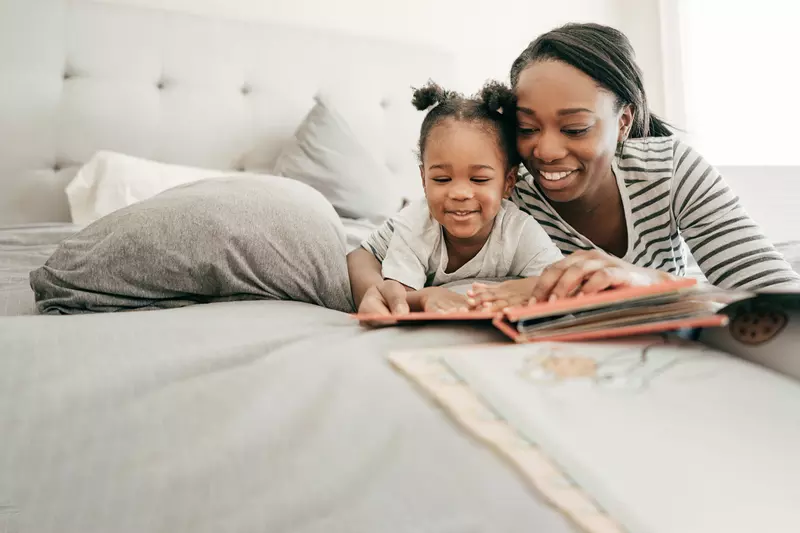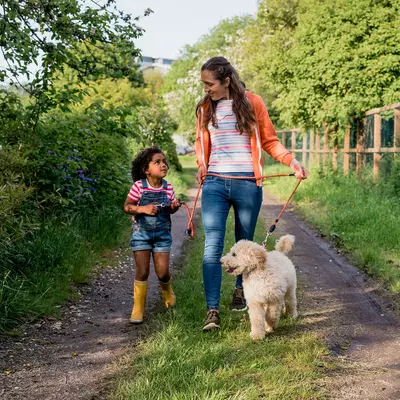- AdventHealth

A simple fact of life is that communication is easily one of the most important and most basic human rights. But unfortunately, it doesn’t come as easy to all of us.
So how can you get your child to communicate with you when they're not doing it on their own? There are many ways to create opportunities to practice communication skills across daily activities. The idea is not to frustrate your child, but to manipulate the environment in a way that encourages him/her to verbally interact.
They also need motivation! If they’re not interested in what you have to offer, chances are they won’t have anything to say about it. It's important to spend time with your child and get to know their interests. Try experimenting with different games, activities, and materials to see what catches their attention most. Once you find out what works, use that knowledge to your advantage.
Help Your Child Communicate
Here are some effective ways to get your child communicating:
Place preferred toys in sight but out of reach (on top of shelf, inside of clear containers)
This means that your child will have to ask you to get it for them, which is a great opportunity to have them request. You can start by keeping the toys in a box closed tight enough so your child won’t be able to open on their own.
Before opening, knock on the box a few times and say “open.” Prompt your child to do the same or to request “help” before opening it. If you're using the "out of reach" method, have them request "want" before getting it for them. Always start simple with single words before having them use two or more words to request.
Cause and effect toys are a great place to start for language development
Cause and effect helps children realize that their actions have an effect on their environment, similar to communication (pointing or using words to get something). Before using language, kids need to understand this concept in order to learn that they can control their environment with their words.
Depending on the toy or activity, you can use words like “want,” “more,” “push,” “twist,” “open,” “close,” “in,” “out,” “bye-bye,” “up,” “down,” etc. The goal here is to match cause and effect activities with language, and then generalize it to other areas.
Holding on to pieces of toys to elicit requests
Similar to placing toys out of reach, this is a great opportunity to have your child request for each individual piece. This works great with toy sets, such as car/train sets or Mr. Potato Head. This is also great because you will have so many opportunities to learn new vocabulary!
Have your child request the individual pieces before giving it to them. Model what you want them to do/say (for example, “car,” “more,” or “want”). Again, start off very simple with single words before moving on to two words. Cars and trains are also perfect for learning vocabulary words such as colors, counting, and working on environmental sounds, like, “choo choo” or “beep.” Say them while playing — the sillier you sound the more likely they are to attempt it!
Bubbles – a huge motivator!
Use them to have the child request “open,” “blow,” “more,” or “my turn” and to say “pop, pop, pop,” when popping them. Bubbles are also a great way to work on increasing utterance length. For example, once the child is able to say “more” independently, prompt them to say, “more bubbles,” then “I want more,” and then “I want more bubbles, please.”
This is very simple and can be so much fun for your little one.
Use food to your advantage
Depending on the child, food might be a huge motivator and perfect for requesting “more,” “I want,” or “yummy.” Treats are nice, but this can also be practiced during regular mealtime. In addition to naming food, talk about the color, smell, temperature and texture of what they’re eating.
This also works for picky eaters by allowing them to play with the food and feel it with their hands. Once they’re done, or if they’re not interested, cue them to say “all done” or “bye-bye” before taking the food away.
Music/singing
Not only does music make everything way more fun, but it also keeps kids engaged. Play a preferred song on your phone or tablet and encourage them to sing along. Every few seconds, pause the song and have them request “more” or “go.” Another good idea is to have them play along with toy instruments. This adds many more vocabulary opportunities (“bang,” “loud,” “quiet,” “play,” “shake”). After listening and singing along with a song, sing it acapella again, slowly, so they can hear each word clearly. Additionally, try pausing and having them fill in the missing word. Be sure to give them enough time to process.
Keep It Simple and Consistent
Keep in mind that activities don’t need to be tangible. A simple game of “peek-a-boo” or turning on and off the lights can also get your child excited and babbling. It’s also important to note that all children are different and will reach milestones at their own pace. Being patient and consistent is key.
If these methods don’t work right away, remember that change can take time, and your patience and persistence can pay off. But if these tips aren’t helping, or your child needs a specialist’s care, help is close to home. Our experts are ready to understand and work to meet your child’s needs and ease your mind as a parent.
Our Pediatric Rehabilitation Team Is Here To Help
Our family-centered program focuses on each child's unique needs, empowering parents and caregivers with the necessary skills to help their child succeed. Pediatric rehab sessions are fun and functional, promoting carryover into home, school and the community. To learn more or to find pediatric rehabilitation services near you, click here.



